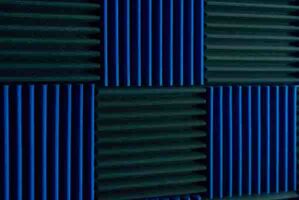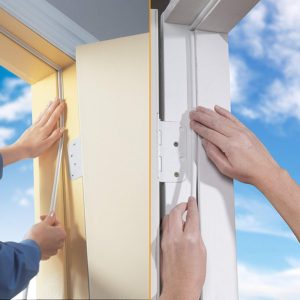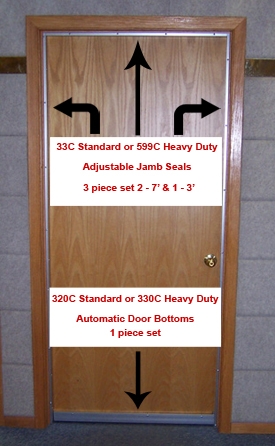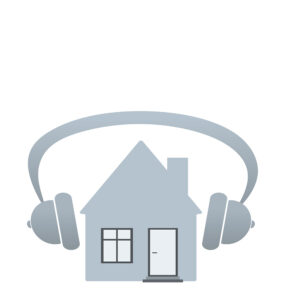How To Soundproof An Interior Door
How Do You Soundproof an Interior Door?
Looking to soundproof your door? These soundproofing tips can help you reduce noise and create a tight seal beneath your door.

By Kevin Schlosser
Maybe you’re an amateur musician looking to record a track. Or possibly you’re a YouTuber who needs a quiet place in which to record audio for your next video. It could also be that you’re just sick and tired of hearing the sound of traffic or noisy neighbors day and night.
There are lots of reasons why you may be considering trying to soundproof a room, especially near the door area. But can you really do that? After all, professional soundproofing can take days and cost thousands of dollars.
True, a music studio will have a far more elaborate setup, but with these basic door soundproofing techniques, you can still enjoy the “Sound of Silence” in your own home. After reading these DIY tips if you would prefer a professional solution, and your in the Denver area, contact us.
1. Use Blankets
So simple, yet so effective. As amateurish as it may seem, using blankets to stop up the crack at the bottom of your door can be an effective way of blocking out some sound. Moreover, you don’t have to spend a dime. Just some blankets you already own, wad them up, and slip them so that they fit snugly underneath your door.
2. Acoustic Panels
There are two basic types of soundproofing acoustic panels, foam and fiberglass. The former can help reduce echoes while the latter work to block noise outright. While foam may be more affordable, you get a lot of bang for your soundproofing buck with fiberglass. Not only does it block out sound rather than simply reduce echoes, but it also goes well with many modern minimalist décor schemes.
3. Door Seal Kits
A couple door seal kit options to consider.
As we have seen so far, one of the key ways for soundproofing a home and reducing noise levels is by sealing them off from external sources of noise. While blankets are an inexpensive way of doing that, they are by no means the most effective. Door seal kits, by contrast, are both affordable and effective in creating the kind of tight seal that is necessary to reduce sound.
There are three components to a door seal kit, these being a neoprene door jamb, door bottoms, and a threshold. The latter two will be touched on as their own solo solutions below. Door jambs feature a rubber basket that can form a seal once the door is closed. These seals attach to both sides as well as the top of a door frame.
4. Automatic Door Bottoms
Now let’s talk about door bottoms. These feature a flat spring mechanism that is concealed, activating when a door is closed by pressing a neoprene seal against the door or threshold.
What is nice about this option is that it is automatic and, thus, does not require any extra effort on your part. For some of the other options on this list, such as blankets, you need to set things in place and then remove them again to actually use the door. That can get tedious in a hurry. Once you have installed door bottoms, you don’t have to deal with it again – it simply slides into place when you close the door and opens again afterward.
What’s more, automatic door bottoms offer a tighter seal than other options such as door sweeps and blankets. They can also be mounted in a variety of ways, allowing you a wide range of freedom in determining how to best reduce noise and soundproof your room while doing so in a way that’s compatible with your door.
5. Door Thresholds
As mentioned above in other methods, door thresholds (also known as door saddles) are placed on top of the floor below the door. This is yet another factor that helps create a seal there. They can be fitted with a neoprene bulb. This helps with misalignment issues, which can also help create a tighter seal by eliminating gaps beneath the door due to uneven alignment. In addition, a threshold can be used in conjunction with door bottoms and door jambs to create a double seal on either side of a door.
This is what is used in professional recording studios.
6. Cover Holes and Gaps
This one’s pretty simple and straightforward, but nevertheless, effective. Sound gets into your home via holes and gaps, so why not patch them up? Sure, you can’t solder your door to the floor or window to the windowsill, but still, patching cracks and doing a little basic home maintenance can help limit the amount of outside sound that is able to get into your home in the first place. Try this advanced noise proofing sealant for best results.
7. Soundproofing Curtains
Strange as it may sound to put curtains over your doors, they may actually be another inexpensive way of blocking out sound. That said, ordinary curtains won’t do the trick. You’ll need to get special curtains that are designed with sound blocking and absorbing materials. For that reason, soundproof curtains are typically thicker than average curtains.
It is worth noting that while soundproofing curtains can be effective against medium and high frequencies, they are far less so with low frequency sounds.
8. Barn Door Sliding Doors
One of the most important factors in designing proper soundproof doors is thickness. Anyone who’s ever been in a college dorm knows thin walls and doors don’t block out sound well at all, which can be a nightmare. By contrast, barn doors are nice and thick. Even so, you hardly want to transform your interior décor into a barn, which is where barn door sliding doors come in.
These are a middle ground between big bulky barn doors and thinner options. They slide firmly into place, creating that all-important sound-blocking seal, and are a better fit with many décor schemes.
Conclusion
There are many reasons to soundproof a room, and many ways to accomplish this. The two main guiding principles in attempting to soundproof a space are to block out external sound and create a tight seal in the process. If you are looking to soundproof a room to improve recording quality, it is also advisable to reduce echoes with upgrades like acoustic paneling.
Whatever your reason for soundproofing your home, with one or more of these steps, you’ll be able to enjoy the peace and quiet you deserve.
Additional resources:

Leave a Reply
About Us
HomeTechHandyman
About Me
The owner of Home Tech Handyman (Kevin Schlosser) has over 20 years of handyman, flooring, and specialized roofing experience. He is also very competent in networking, as well as audio/visual equipment and home automated technologies. He is fully insured in the state of Colorado. He also holds a blend of construction and in-home technology-related certifications like HBA certified Age-in-Place and Project Management certifications.








